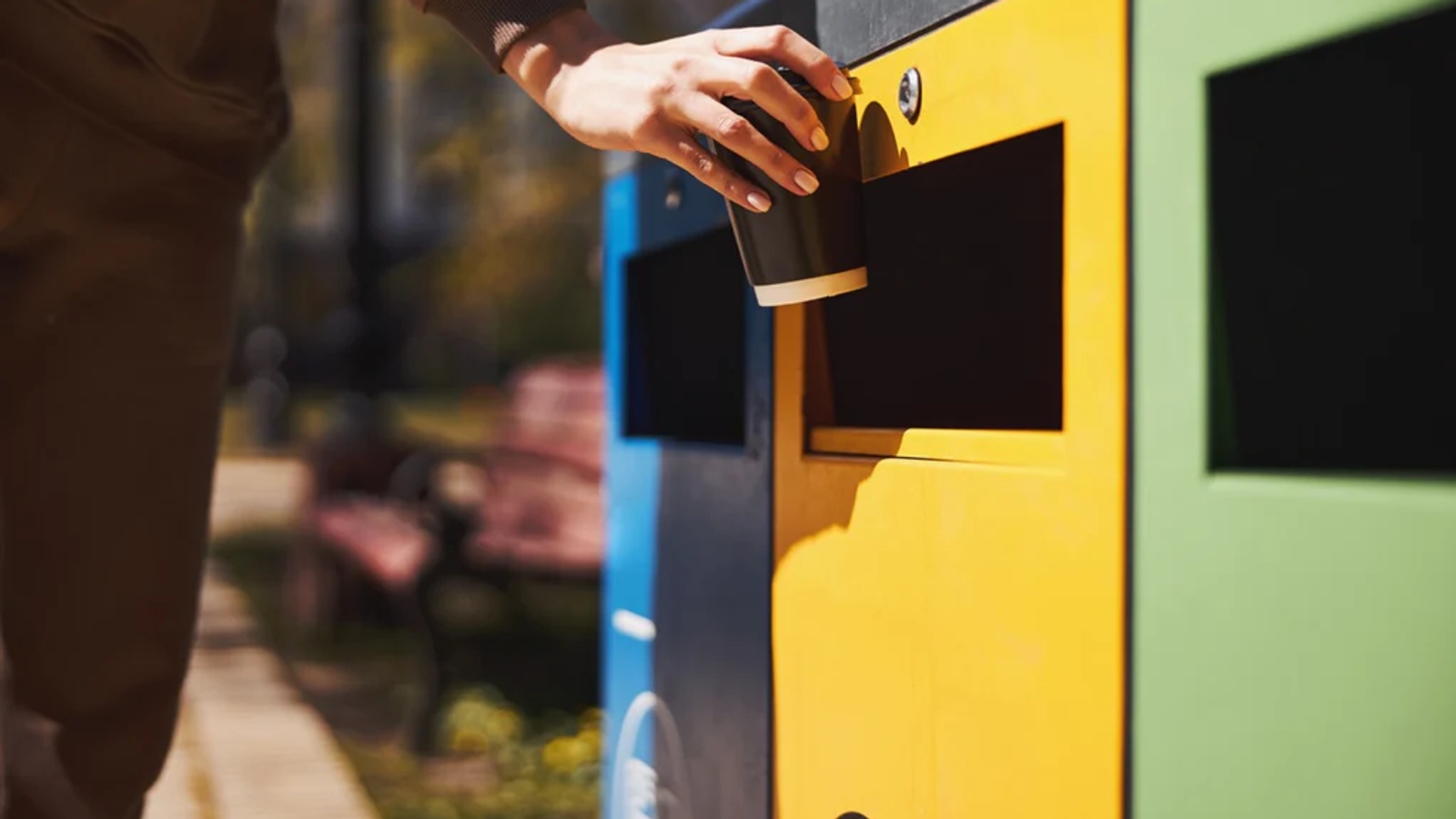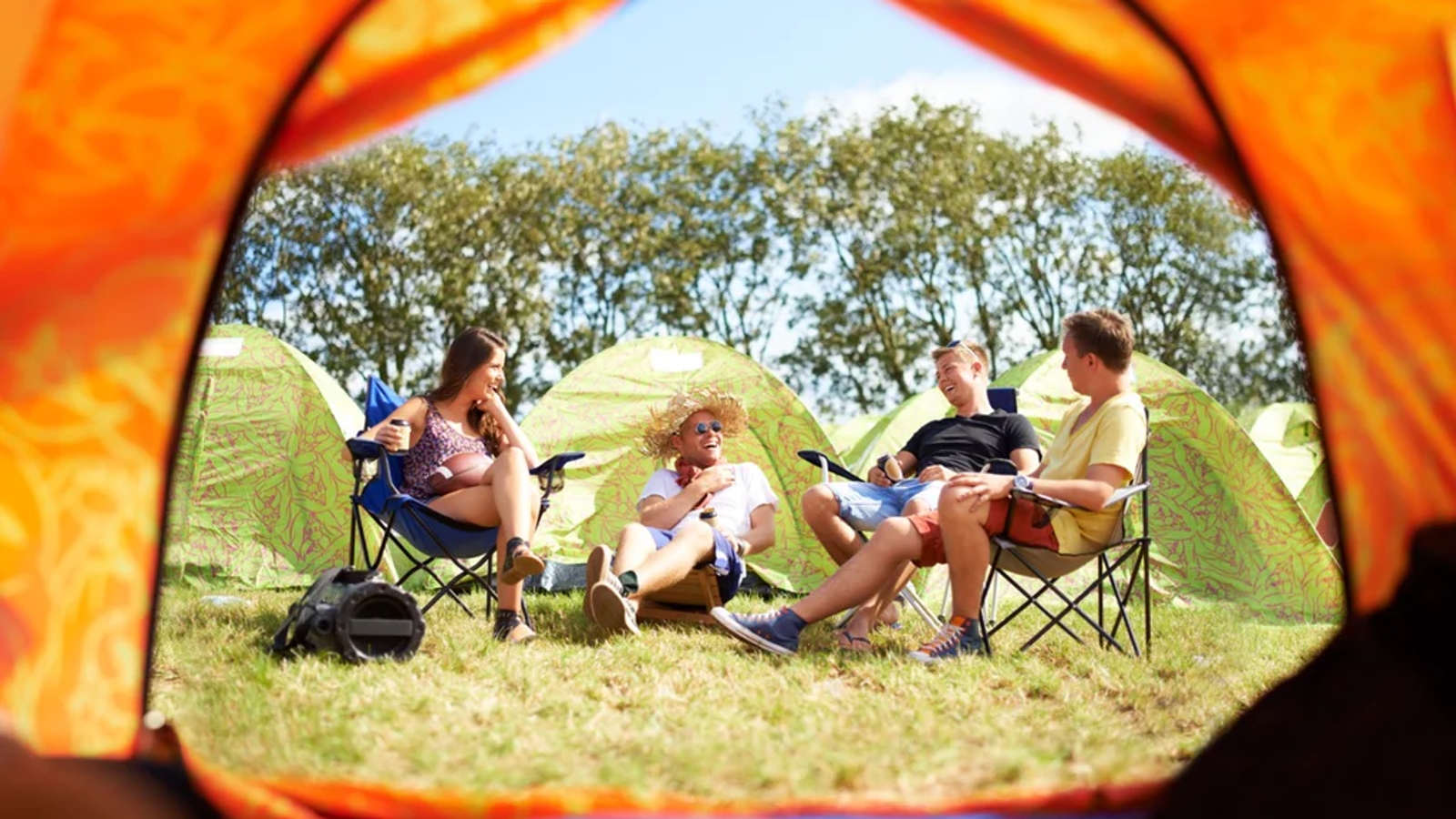
How To Be More Eco-Friendly At A Festival
By Hugo Douglas-Deane
Festival season is here! Glasto arrived and blew everyone’s socks off, and there are plenty more landmark UK festival events to come in the calendar – from Isle of Wight to Wireless, Boomtown to Boardmasters and many more.
Whatever your taste is when it comes to music, your tolerance for mud, and your requirement to get your surf on, we’re here to give you the low-down on how to have a more eco friendly festival experience.
There are a couple of key things to consider, from reducing waste by bringing your own cutlery and cups, to choosing a better festival fit.
Here are our tips on how to have a more eco-friendly experience from start to end and have a better experience as a result.

1. Use public transport
Opting for public transport is a huge win for the environment if you’re travelling to a festival. A double-decker bus can take 75 cars off the road – and a single train could replace 600-1000 cars.
Some festivals like Glastonbury have organised transport which also make it easier for you to get directly to the entrance.
Carpooling with other festival-goers is a great way to not only save on costs but also make some friends along the way. Lots of festivals offer their own ways to find a group, with platforms like Liftshare offering their own options.

2. BYOC
Bringing your own cutlery, reusable cups and water bottles is a brilliant way of cutting down on unnecessary waste.
It’s not just about reducing waste: the last thing you want is flimsy cutlery that breaks as you’re just about to tuck into some well-deserved breakfast after a hard night of partying! Getting your own sturdy, made to last cutlery set is an absolute no-brainer and means you’ll never have to chop up your food with a plastic spork ever again.
While some festivals have take-back schemes to reduce the amount of cups that go into the bin, you might want to take your own.
Check out Akulett bamboo reusable cutlery, Ocean Bottle reusable water bottles , and KeepCup coffee cups and bottles in our On The Go & Travel category.

3. Glitter
They say that all that glitters is not gold and it’s especially the case when it comes to glitter itself.
Most of us have heard about how bad microplastics are. Well, glitter isn’t far from it: they’re made out of small pieces of coloured plastic (which we all know are incredibly hard to get rid of and clear up).
Glitter is impossible to recycle and for a long time environmental campaigns have been calling for it to be banned – and rightly so.
Some festivals are making use of glitter which is certified to break down in freshwater, with brands like Eco Glitter Fun offering a greener alternative.

4. Recycling points
It’s always best to reduce as much single-use waste as possible, but sometimes it’s unavoidable.
Watch out for recycling points and food compost bins for what you can’t avoid. Glastonbury has set a great example with properly divided bins to make sure what gets chucked is properly processed afterwards.
Why’s this important? Well, when certain difficult-to-recycle materials aren’t properly separated they can’t be dealt with properly. Even worse, this can have knock-on effects where whole batches of other recycling they get thrown in with have to be diverted to landfill.
When it comes to food, it’s so important to compost leftovers and waste wherever possible. When food goes straight to landfill it actually gets buried and there’s not enough oxygen or heat for it to break down properly.
As that happens (often this can take a number of years!) it ends up releasing huge amounts of methane, a potent greenhouse gas which is worse than CO2 in the short-term.

5. A tent for life
With tents now cheaper and more lightweight than ever, it’s become commonplace for people to leave them behind once the music has stopped and everyone is heading home.
Part of the problem is that many cheap tents are not built to last, with weak synthetic materials made from plastic and poorly sewn or glued together. But it’s also the case that many festival-goers assume they get collected or given to charity – unfortunately up to 90 per cent of festival tents go to landfill or incinerators.
Investing in a good tent will not only last longer (ready for the next festival or outdoor adventure!) but also give you a better festival experience. If your tent is beyond repair, look for collection points on your way out.
Many festivals also offer pre-pitched tents, so you don’t even need to bring your own and save time on trying to work out which pole goes where!

6. Don't splash the cash on a new wardrobe
A huge impact comes from our fast fashion obsession. It’s estimated three out of five of these items end up in landfill where they won’t break down properly and cause issues for local wildlife, local communities and be a real blight on the landscape.
Unsustainable manufacturing processes lead to more than just carbon emissions: washing, solvents, and dyes used in manufacturing are responsible for one-fifth of industrial water pollution. Cheap synthetic fabrics like polyester, nylon and acrylic are made from fossil-fuels, take hundreds of years to break down, and shed up to 700,000 microplastics when washed!
If you’re looking for a new festival fit, opt for second-hand or choose more sustainable fabrics like organic cotton. Taking a less seasonal approach to your wardrobe is a good thing too: we’ve become accustomed to fast-moving micro-trends rather than choosing well-made, timeless pieces of clothing that can be be worn with a variety of outfit, and it’s great to see ideas like capsule wardrobes taking off recently.
If you’re looking for well-made clothing that uses lower impact, more sustainable materials and manufacturing processes. We have a variety of great better brands in our Clothing & Accessories category.
7. Look at green festival tickets
Many festivals now have sustainability policies and information on their websites where you can see what they’re doing to reduce their impact.
When you’re looking for a greener festival, ask yourself if they’re using renewable energy, how they treat the local environment, how they deal with waste and plastic, and the vendors they have on-site.
A Greener Future certifies festivals and events, with one of their members being Shambala festival, which is run on renewable energy, has recycling schemes, and serves vegan food and drink.
That’s a wrap
So you’re packing up your tent having had very little sleep. You have a splitting headache, someone’s beer dried onto your arm, and you’ve got a long walk back to the entrance gate.
But you can sleep well tonight knowing you didn’t leave a trail of single use cups, plastic cutlery, and discarded festival outfits behind. And you’re certainly not leaving your tent!
Hopefully you’ve picked up some practical tips on how to reduce your impact at festivals and have a more eco friendly experience, and maybe even learned something new.
Until next year’s festivals, adios!



